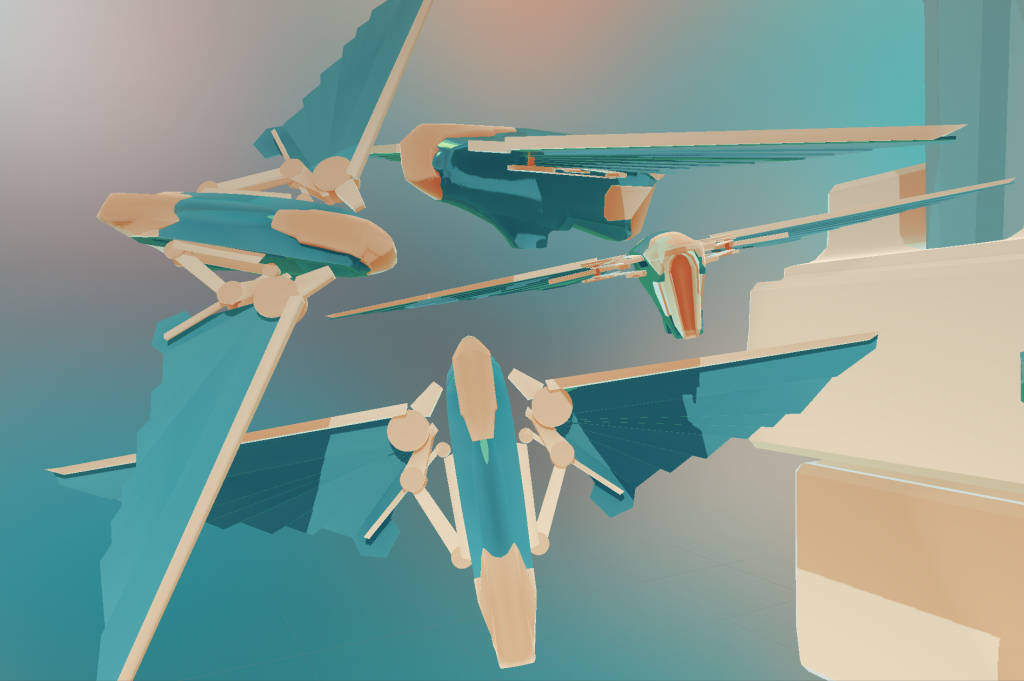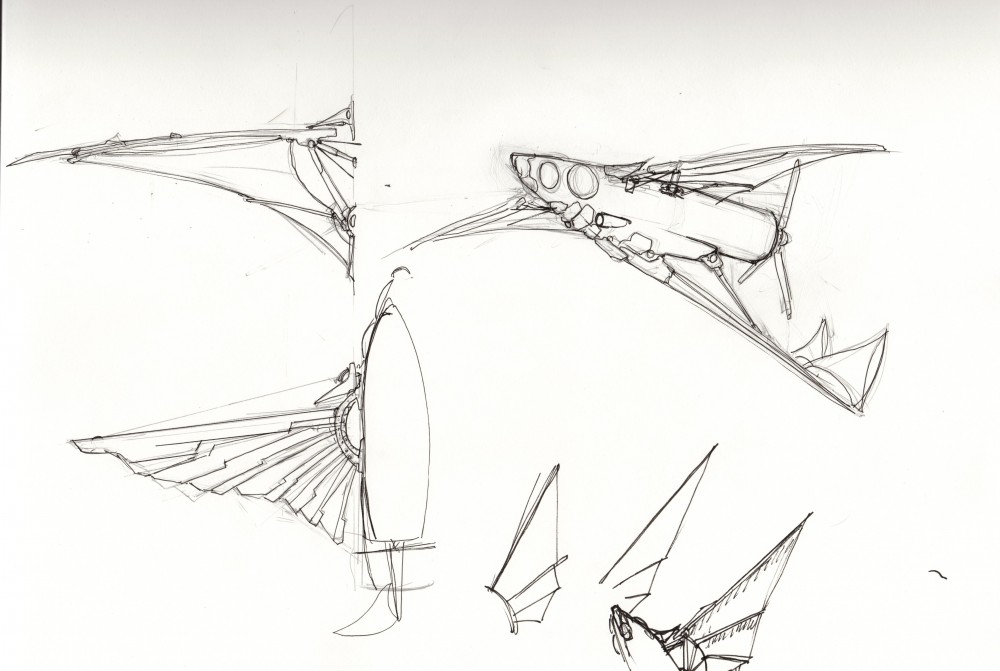This is a shorten article taken from PolyKnightGames.com.
We knew that we wanted InnerSpace to be a flying game with a real sense of physical weight and feedback form the start. As the mechanics and design for InnerSpace began to fill out, so did the idea for our plane. It had to be something that fit the visuals as well as the functions and tools available to
the player. And since this is a game of exploration, the plane had to be a player vessel and not a player character itself. That is, it’s designed as a conduit into the world, rather than a narrative construct.
Mechanics: A Word on Wings
InnerSpace’s gameplay is not only in the air but also in the water and so our plane needed to be designed for that and be able to take the dive in between the two. The plane needs to be water tight and capable of submarine propulsion, but also be able to soar through the air. This all needed to show in the design.
With a tapered front-end, the plane could conceivably break the surface tension of the sea and execute successful dives. Similarly, placing the tail beneath the engine allows it to aid in navigation and fold up when diving or at high speeds for a slimmer form. Meanwhile, integrating the engine
into the fuselage keeps the interior watertight and the silhouette simple.
We ran through many different ideas for the design of the wings, each unique with its own problems. We went with a design that incorporated two “stacks” of feathers composing each wing. Each stack is held together by a small column and two disks, which allow the feathers to rotate and are themselves
joints in a larger rail-mounted scaffold. This scaffold can reposition the wings and is a key part of the folding process.
When unfurled, the feathers are designed to mimic the general silhouette of a bird’s wings. While we aren’t simulating aerodynamics in Innerspace, the two stacks are arranged in a rough approximation
of an airfoil.
A Vessel, Not a Character
InnerSpace doesn’t have a main character; the protagonist is the player. Without all the normal backstory and passive dialogue, the player is motivated to experience the game how they choose. The
plane is the tool to experience the world of InnerSpace, so the design needs to reflect that. It was designed with two elements in mind: capability and personality.
Capability is the sense that the machine responds intuitively and organically to player input. Meaning that the plane is designed accounting and considering the type of flying on display. The flight is swift but not break-neck, agile without feeling rushed, and so the design needs to show that.
Personality plays an equally important role in the design of the plane-as-vessel. Presenting the player with a cold, silent machine would likely characterize the entire game along similar lines. Instead, the design balances animalistic influences with a hardy metallic construction.
In the end, we think it’ll take you where you want to go.








